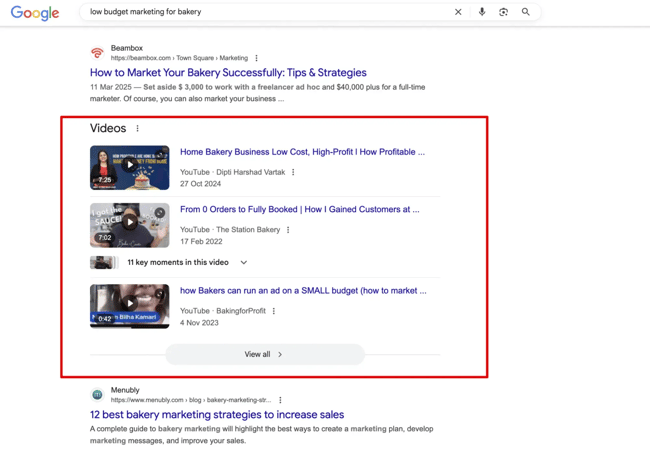So, I pulled together the most common blogging mistakes and quick fixes global content marketers recommend.
Let’s harness the power of good writing to turn blogs into communities and business opportunities.
In this article:
Why do blogging mistakes happen?
Blogging is more complex than a lot of people realize, whether you write for your own blog or run a corporate one. There are dozens of moving parts:
- Experience level (both your and your writers).
- SEO & AEO expertise.
- Budget.
- Your degree & major (e.g., major in journalism or finance).
- Business acumen.
- AI expertise.
- Writing style.
These are only the tip of the iceberg. Then, you’ve got to account for content plan, overall content strategy, distribution strategy, formatting, editorial processes, SEO, AI citations, and so on. In the end, blogging is like an onion — layer by layer, you deal with new obstacles, and sometimes cry.
The sooner you’re aware of possible (can I say inevitable?) mistakes, the better your blogging results are. Let’s break them all down.
1. Writing on topics that only interest you.
As much as you might read and re-read your blog posts after you publish them, you’re not the intended reader. You’re building a blog for people out there, so you have to account for their interests and deliver content to inspire, teach, encourage, and sell your products or services.
Your audience is different; so, you’ve got to put them on top when creating a content plan.
“Your blog is a honeypot, not a megaphone. Make it a point to position your content around what your audience wants to discover, not what you want to tell them,” said Amanda Sellers, blog growth manager at HubSpot.
Solution: Align your blog posts with company growth goals.
The rule of thumb is to revolve blog post ideas around your company’s products and growth objectives. I recommend that bloggers outline their target audience’s jobs-to-be-done and develop content hubs accordingly.
For example, a reader of a personal finance blog would want to solve financial management problems, get insurance tips, learn about small investment options, etc. Even if you’re not that interested in investment, you have to serve your readers. Interview subject-matter experts for that.
Running a corporate blog? Chat with your manager about the larger company goals, and then schedule a meeting with someone on the sales team to hear what questions your prospects ask most often.
After both meetings, you should know which goals you need to achieve and have some blog content ideas on your target audience’s pressing issues.
2. Not tying back your content to buyer personas.
If yesterday’s buyer personas were “nice-to-haves” for many, today I can assure you that a blog can’t compete in LLMs or AIO without optimized content to specific roles.
Kevin Indig, growth advisor, also highlighted in his newsletter “Growth Memo” that classic personas have been left out of SEO in the past: “AI systems personalize summaries and citations around the context. If your content doesn’t meet the persona’s trust requirements or output preference, it won’t be surfaced.”
The takeaway: If you want your blog content to perform well (i.e., generate traffic, leads, and sales), it must resonate with LLMs and your audience and compel both to take action.
“Your persona is the basis for everything you create. Suppose you speak to your persona’s pains, challenges, and goals. In that case, they are more likely to stay on the page and convert on your offer,” said former HubSpot Senior Content Marketing Manager Christina Perricone.
Solution: Develop your user persona and pick content topics that speak to them directly.
I’ll introduce here the quick steps to define your buyer persona for content marketing efforts that will prompt you to build a content plan with new SEO/AEO realms in mind.
- Gather your customers’ pain points. Talk to the customer success team and run polls on social media or a newsletter.
- Draft all jobs-to-be-done. What are your customers’ routine tasks? What do they need to accomplish? What do they report for?
- Role and seniority of your users.
- Define trust cues. What proof convinces your customers to take action? Customer stories, content complexity, reviews, a podcast hosted by your team?
- Listen to online conversations around the topic.
- Identify blockers like budget or legal constraints and risks associated with working with a young company.
By defining your buyer persona and understanding what matters to them, you can effectively bridge the gap with your content. Remember, your blog should strive to connect with folks who are likely to eventually make a purchase from you.
“Once you have a solid understanding of who you want to target, this knowledge can inform not only your topic selection, but the tone, format, and complexity level of your content,” says Karla Hesterberg, HubSpot’s content marketing director.
3. Only covering trending news.
Trendy or buzzy content can quickly become outdated and irrelevant. That’s why you shouldn’t craft your entire monthly content plan around it.
For example, news about a petition to change the law surrounding sponsored content may become outdated when the law is struck down or takes effect. If your post only covers the news, it will stop gaining traffic once the topic is no longer relevant.
Solution: Prioritize evergreen content with buzzy angles.
Evergreen topics often address overarching ideas that will remain relevant and not become outdated in the near future.
On our marketing blog, one example of this is “What is Digital Marketing.” Although we’ve updated the piece to include new digital marketing strategies, the definition of digital marketing won’t change at its core.
At the HubSpot Blog, we often call our overarching evergreen topics “pillars” because an overarching evergreen topic can lead you to brainstorm a number of smaller post ideas and story angles. We also take it one step further by creating and regularly updating long-form posts, called pillar pages.
This makes the content relevant, fresh, more shareable, and linkable. It also means a higher search authority and search engine ranking.
However, Hesterberg warns content marketers not to create evergreen content exclusively. She says, “Evergreen content is a necessary backbone of any successful content strategy, but don‘t ignore the trends happening in your industry — because your readers certainly aren’t. Offering your take on industry trends is an opportunity to build a thought leadership presence and show your target audience that you’re a knowledgeable, active player in your space.”
4. Writing about a niche without showing the bigger picture.
Niche topics are great for SEO because they have weak keyword difficulty (aka SERP competition), but they often flop with readers if you don’t connect them to the bigger struggle your audience faces.
For example, I can write a piece on “API security protocols” or “best AI image upscalers,” and they may rank, but why should your reader care? Without context, it’s just trivia.
To fix it, I’d connect the dots between the niche detail and the high-stakes outcome (time saved, revenue gained, credibility built).
Solution: Anchor every niche in a strategic win.
First, ask: What high-stakes business risk or opportunity does this niche solve?
Spell out the “so what”:
- If they ignore it, what will break?
- If they nail it, what will grow?
Tie it to the buyer journey. Early awareness content frames the stakes, while decision content gets tactical.
In 2025, this also means considering the impact of AI on search culture. LLMs like ChatGPT and Perplexity don’t surface content that’s just “how-to”. They pull answers that connect dots and show impact, like I already showed you in the #2 mistake.
If you skip the bigger picture, your post won’t even get picked up.
"If you’re uninterested in a particular topic you’re writing about, it’s probably because you haven’t stopped to think about the big picture,” says HubSpot Senior Content Strategist Caroline Forsey.
“Understanding how the topic you’re writing about will fit into a reader’s broader challenges will help you find meaning and value in any post you write, and will enable you to connect with your readers better.”
5. Writing without structure.
Early in my blogging days, I thought dumping all my thoughts into one post was authentic and deep. In reality, it left readers (even me) scrolling through walls of text and headings with no clear connection. Luckily, it took me only a few articles to realize, and one copywriting bootcamp.
That was my personal blog, so I could fail and learn without thinking much about SEO. But when I see writers treating their articles like a brain dump for corporate blogs, I shrink.
Your audience doesn’t come to your blog to watch your brainstorming process — they come for clarity. If your post isn’t structured, they’ll bounce, and probably never come back.
Solution: Structure your blog with a template, outline, and section headers.
I start every post with a clear type in mind: how-to, listicle, case study, thought leadership, or interview-based.
For help on this, download our free templates for creating different types of blog posts.
Then, I sit down to create a blog post outline — the skeleton of headings and subheadings with talking points and my other notes. How do I know if I can build an article from it? If my outline doesn’t flow, the final draft won’t either.
“More experienced bloggers might dismiss this,” says Karla Hesterberg. “But creating an outline has a big impact on the clarity, organization, and flow of your final piece — particularly when you’re trying to teach a complex concept. I can always tell when someone’s skipped an outline.”
New to outlining posts or still unsure of where to start? I recommend choosing formats like listicles or step-by-step guides, as these are easier to write since the structure is a sequential order of events.
Hesterberg also highlights that headers are critical for the reader experience, SEO, and AEO:
“While it’s nice to imagine that your readers hang on your every word, the reality is that they’re probably mostly skimming your posts. As you write, be sure you’re making your piece skim-friendly: include plenty of paragraph breaks, clearly titled sections, relevant images, and formatting that makes it easy to find the piece of information they came for.”
6. Ignoring, fabricating, or misusing data.
I see too many bloggers either write without data proof or dump a bunch of random statistics with zero context.
Can you recognize one of the patterns?
Example 1: “Most marketers use AI to write ad copy nowadays.”
OR
Example 2: “Instagram’s user base is growing far faster than social network usage in general. In the U.S., Instagram will grow 15.1% this year, compared to just 3.1% growth for the social network sector as a whole.”
Both kill credibility.
Your readers don’t want empty claims like “AI is popular among marketers.” They also don’t want a firehose of numbers with no tie-back to the point, like the Instagram growth prediction.
What they need, data-wise, is evidence from relevant, fresh reports or experimental campaigns that back up your POV. Only then do data-driven articles build trust.
What can be even worse is when bloggers fabricate data or link to super-old research from 2014 that has lost all relevance.
Solution: Use fresh, relevant data that proves your case.
The fix is straightforward — use data only when it strengthens your argument. And keep in mind the following:
- Pull numbers from trusted, recent sources — Pew, Gartner, HubSpot, Nielsen, McKinsey, Gong, Aherfs — and link directly to the original study. You should never link to stats aggregators or third-party sources because those kill trust (both with readers and search engines).
- Show the so what. Don’t just say “TikTok users grew 15%.” Spell out what that means for a brand deciding where to put ad dollars.
- Apart from well-known research sources, run your own customer surveys and LinkedIn polls.
7. Providing too little context.
“When I first joined the HubSpot Blog team, I would consistently get the edit that I wasn’t adding enough examples to support my statements,” says Meg Prater, head of content strategy and operations at HubSpot Media.
“For example, I might write ‘SMBs should expand their social media strategies to experiment with newer, cheaper channels.’ Sure, that might be true, but it’s a pretty broad suggestion.”
Readers (and AI summarizers, by the way) can’t do anything with broad advice. They want concrete stories, proof, and scenarios they can map onto their own business.
Solution: Illustrate ideas with examples, customer stories, and quotes from industry experts.
As bloggers, we become experts in our industry. Take this article — I take ownership and am responsible for any advice given here. If I want to drive the point home, I describe my lived experience or bring up the wins and failures of our brilliant team members.
Thanks to this, the article doesn’t read like a dump of empty statements or AI-generated advice.
And if I’m tasked to write on a topic I have no hands-on experience with, I put on my journalist hat and dive headlong into research. I look into:
- Customer stories.
- Relevant YouTube talks and podcasts.
- Recent studies.
- LinkedIn and Reddit discussions.
- Book summaries.
- Webinars.
And, of course, I interview at least three subject-matter experts and ask three different questions to get a firm grasp of a topic.
Bonus: If that contributor is well-known in your industry or considered a thought leader, this makes the post more shareable on social media or through backlinks.
Another bonus, according to Caroline Forsey, is that including interviews and quotes from someone in the field helps the user experience.
8. Copying others’ work and not crediting them.
This is the worst mistake content writers can make. It jeopardizes your brand and hurts search engine rankings. But even if you’re not copy-pasting, just rehashing what’s already ranking in Google is almost as bad. Readers and search engines can smell it.
If you get caught stealing other people’s content, you can get your site penalized by Google, which could be a big blow to your company blog’s organic growth.
Solution: When drawing from others’ ideas, cite them.
Giving credit to the site you’re borrowing from signals search engines and readers that you’re not a thief. But linking to the source isn’t enough to build credibility around your content. For that, layer in your own data — a customer quote, an internal benchmark, or a quick test you ran last week.
Plus, share your take: Do you agree with the research? Disagree? Why? Your perspective will make a post original and honest.
Take a few minutes to understand how to cite other people’s content in your blog posts.
9. Thinking you’re done once the writing’s done.
How about editing and copyediting your craft? This is also a part of blogging, a necessary one. No edits = sloppy phrasing, weak flow, and sometimes embarrassing typos. I’ve been there. Haven’t you, too?
So, anytime you want to publish your piece as it is, don’t. Seriously. Unless you want your readers to stumble upon some redundant or incomplete ideas.
Solution: Take 30 minutes to edit your post.
First, let’s admit it: Everyone needs to edit their writing — even the most experienced writers. Next, step away for a few hours (or a day) before revisiting your draft; fresh eyes catch more mistakes. I usually take a 30-minute break.
Edit in layers. First for clarity and structure, then for style and tone, grammar, and flow. Fix typos, run-on sentences, and accidental its/it’s mistakes. Ensure your story flows as smoothly as it did in your outline.
Run content through AI grammar tools like Grammarly or ChatGPT & Co if you want, but don’t outsource judgment. A tool can’t tell you if your argument actually makes sense.
To help you remember all the little things to check before publishing, I recommend that you check out our checklist for editing and proofreading a blog post.
10. Writing without SEO and AI citations in mind.
I’ve seen posts with brilliant insights disappear into the void because they weren’t aligned with how search engines and AI assistants surface content today. That’s why bloggers should always keep their fingers on the pulse with Google SEO/AEO and LLMs’ updates.
Solution: Optimize for both search engines and AI answers.
This is the topic for a separate long-read, so here, I’ll break down key steps of SEO/AEO content optimization, and link to academies and deep guides where you’ll pick up practical skills.
- Define audience intent + keywords. Do keyword research to find what people actually type (use Ahrefs, SurferSEO + investigate “People Also Ask,” LLM query suggestions, etc.). Identify whether the intent is informational, navigational, transactional, or conversational (AI answer style).
- Create structured blog post outlines with keywords. Design headings/subheadings; make them scannable and include keywords (but naturally). Use bullet lists, images, and infographics to break text-heavy parts and help LLMs pull the information.
- Optimize for AI answers / featured snippets / AEO. Aim to open headings bottom-up. First, bring the benefit, then expand. Answer questions directly and concisely. Use schema markup (FAQ, How-to, Q&A) where relevant.
- Do on-page SEO basics. Add meta titles and descriptions optimized for keywords and clickability. Alt text for images, proper URL structure. Remember about internal linking to cluster content/pillar pages.
“Interlinking your own content is an important strategy from both an SEO and content discoverability perspective,” says Hesterberg.
- Optimize for performance and technical health. Fix crawl errors, canonical tags, and redirects if needed. Optimize page speed (images compressed, scripts optimized) and mobile responsiveness.
- Optimize for conversion and distribution. Make sure your content has relevant CTAs and product tie-ins. Consider how content shows up in LLMs / answer engines and whether you can influence that with better snippet-style content.
This is the minimum required to make your content seen in SERPs and AI tools. If you think you can skip some steps, I assure you, you cannot.
You might not realize it, but even your images can be holding your search engine ranking back. Search engines like Google analyze the alternative text of your photos to ensure that they contain consistent keywords. They also look at how quickly these photos actually load.
Pro tip: Compress images as much as possible before they lose quality. If you’re not a Photoshop expert, don’t worry. You can do this quite simply with websites like Squoosh.app.
11. Focusing analytics on immediate traffic.
If you concentrate your analysis on immediate traffic (traffic from email subscribers, RSS feeds, and social shares), then it’s going to be hard to prove the enduring value of your blog.
Both beginner bloggers and advanced bloggers are guilty of this blogging mistake.
When marketers who are just starting their business blogs see that their blog posts aren’t generating any new traffic after a few days, many of them get frustrated. They think their blog is failing, and they end up abandoning it prematurely.
Solution: The ROI of your blog is the aggregation of organic traffic over time.
Instead of focusing on the sudden decay of short-term traffic, focus on the cumulative potential of organic traffic.
Over time, given enough time, the traffic from day three and beyond of a single blog post will eclipse that big spike on days one and two, thanks to being found on search engine results pages through organic search. You just have to give it a while.
12. Not attracting new subscribers.
Once you start blogging, it’s easy to forget that blogging isn’t just about getting new visitors to your blog.
One of the biggest benefits of blogging is that it helps you steadily grow an email list of subscribers you can share your new content with. Each time you publish a new blog post, your subscribers will give you that initial surge of traffic — which, in turn, will propel those posts’ long-term success.
The key to getting significant business results (traffic, leads, and eventually customers) all starts with growing subscribers.
Solution: Set up a subscription CTA and email newsletter.
First, use your email marketing tool to set up a welcome email for new subscribers, as well as a regular email that pulls in your most recent blog posts.
You can use HubSpot’s email tool to easily set up these regular email sends, as well as set up a welcome email for new subscribers.
Next, add subscription CTAs to your blog (and elsewhere, like the footer of your website) to make it easy for people to opt in. These CTAs should be simple, one-field email opt-in forms near the top of your blog, above the fold.
As for where to put these CTAs, we typically place our blog CTAs at the bottom of our blog posts or add a slide-in, which you can learn how to do using a free tool called Leadin.
You can also create a dedicated landing page for subscribers that you can direct people to via other channels such as social media, other pages on your website, PPC, or email.
13. Publishing text-heavy posts.
Blocks of text with no visuals, no breaks, no air don’t perform well. Readers skim, and if they can’t get the gist fast, they bounce. And when they do, it signals search engines that your content is weak.
For 2025-26, the bar is even higher. People expect posts to be multi-modal with text, visuals, charts, tables, and even short clips. We want to read TL;DR first and decide whether or not a post is worth our time.
Solution: Design your post for scannability and readability, and add multimedia content.
I’ve already covered how to develop structured articles with SEO in mind, so let’s focus on visuals here. Perricone explained that videos and graphics also provide organic traffic opportunities.
“We’ve found that visual content gets more backlinks, ranks higher in search engines, and drives more traffic,“ she says.
At the HubSpot Blog, we’ve experimented with placing infographics and videos into our blog pieces. These visuals add another layer to the reader’s experience, beyond the text, and get people to spend more time on page (which is a crucial ranking factor).
Apart from that, SEO-optimized multimedia brings in additional traffic from Images and Videos as Google embeds them directly into the SERP.

What types of multimedia content work for blogging?
- Charts
- Graphs
- Tables
- Product screenshots
- Screenshotting examples you’re talking about
- Quotes
- Short infographics
- Videos
“You don’t need to have a full-time team of multi-media content creators to experiment with different formats,” says Hesterberg. “Use free tools to create visuals like Canva or Venngage and play around with different post structures — just remember to experiment with a purpose.”
When it comes to video, creating this content could be as simple as filming yourself explaining a topic or interviewing a customer on camera. If you want to zest things up after recording, you can use free or affordable video editing tools to make quick, clean edits and add effects like transitions or subtitles.
Alternatively, I usually embed videos that were already made.
14. Not auditing existing content.
Blogs with hundreds of posts drag down performance because they’re outdated, irrelevant, or broken. When Google crawls your blog and finds outdated posts in abundance, it may devalue the rest of your content, too. Our blogs have had this issue that we sorted with deep content audits and content pruning.
Solution: Audit your blog, prune and update content regularly.
If boiled down, here’s what you should do to keep your blog neat and tidy and ranking well:
- Find posts that are underperforming. Look for low traffic or dropping rankings.
- Check for outdated info. Broken links, stats from 2019, outdated or blurred images, or missing updates will kill trust fast.
- Repurpose or prune. If a post can’t be salvaged, either update it into a new format (video, guide, case study) or cut it altogether.
- Schedule regular reviews. Most posts need a yearly refresh. Schedule content audit into phases and run it quarterly if your blog has thousands of pages. Build it into your content calendar.
Does deleting blog posts really work? You bet!
We deleted 3,000 pages from the HubSpot Blog and saw an organic traffic increase. Then, we killed 2,888 URLs. Additionally, we’ve been updating underperforming blog posts that have relevant traffic potential.
Sneak-peek into HubSpot’s content audit process — we crafted two detailed guides on how we update and prune our content:
- Why We Removed 3,000 Pieces of Outdated Content From the HubSpot Blog
- How Content Audits Help The HubSpot Blog Age Backwards — A Peek Into Our Process
15. Not promoting your content on social platforms and beyond.
If you don’t distribute, your brilliant post will sit quietly in a corner of the internet. In 2025, relying only on Google for traffic is risky. AI summaries steal clicks, and competition is fierce. In fact, 60% of Google searches end without a click.
Social promotion, newsletters, creators, and other content distribution channels are how you build reach and authority.
Solution: Promote your blog with a Loop-marketing technique.
HubSpot has reinvented inbound marketing playbooks (again) and introduced a new Loop Marketing strategy. It’s about treating your marketing as a cycle of four actions:
- Defining your message and tone of voice (Express).
- Adjusting it to different channels (Tailor).
- Using multiple distribution channels (Amplify).
- Measuring performance (Evolve).
Why did we need to flip old playbooks? Because of the constant evolution of AI, search engines, and consumers’ behaviors, even three-year-old tactics have stopped delivering.
Here’s how it applies to blogging:
Express. Nail the core takeaway of your blog, your distinct brand identity.
Tailor. Adapt your blog to fit your readers’ needs and different channels.
Amplify. Get it in front of more people:
- Turn it into a LinkedIn carousel with five slides summarizing the main points or a podcast snippet.
- Share in a Slack community, Reddit, partner with a creator, or boost with paid ads.
- Bundle it into your next newsletter issue.
- Turn it into a 30-second TikTok or Instagram Reel.
- Quote a reader’s feedback or comment as a hook for resharing on X.
The loop keeps one blog alive for weeks or even months, reaching new audiences in the way they are used to consuming content.
16. Blogging inconsistently.
By now, you’ve probably heard that the more often you blog, the more traffic you’ll get to your website — and the more subscribers and leads you’ll generate from your posts. That’s partially true.
New blogs need to post at least eight blogs per month. Google has to learn your angle, your niche, and how it compares to others. In technical terminology, it’s called gaining topical authority.
But as important as volume is, it’s actually more important that you’re blogging consistently. If you publish five posts in one week and then only one or two in the next few weeks, it’ll be hard to form a consistent habit.
More importantly, it won’t rank.
Search engines tend to crawl and re-index sites more often if they are updated or produce new content regularly.
Solution: Schedule and publish blogs consistently.
Use a content calendar to get into the habit of planning your blog post topics ahead of time, publishing consistently, and even scheduling posts in advance if you’re having a particularly productive week.
Here at HubSpot, we typically use Google Calendar as our blog editorial calendar, which you can learn how to set up step-by-step.
Or, you can click here to download our free editorial calendar templates for Excel, Google Sheets, and Google Calendar, along with instructions on how to set them up.
1. Write like you talk — ditch robotic and overly sophisticated language.
If your blog sounds like it was spit out of an AI tool, readers will sniff it out immediately. Generic phrasing, lifeless tone, and “perfectly neutral or sophisticated” structure feel safe — but they also feel soulless, and AI-ish. That’s when readers skim, bounce, and never come back.
With AI, everyone can generate content now. What sets your blog apart is the human layer.
Your perspective, your stories, your contrary opinion, humor, and even your imperfections. See how I’m openly weaving in my and my colleagues’ blogging experience? Our analytics show that the readers and search engines love such an arch.
So loosen up your writing.
- Write like you talk. Use contractions, plain language, and the phrasing you’d use over coffee with a colleague.
- Add stories. A sentence about “the time I lost a client because of a sloppy post” is more memorable than a wall of tips.
- Layer in opinions. Agree, disagree, or critique. Readers return to writers who take a stand.
- Teach AI your tone of voice. Use it for drafts if you must, but always rewrite until it sounds like you.
People want to feel like they’re doing business with real people, not robots.
2. Drive your point home.
Although I encourage you to let your own personality shine through in your writing, don’t abuse the privilege. It’s one thing to be yourself in the topic you’re covering, but it’s another thing to bring up too many personal experiences, which will bury the point you’re trying to make.
The same happens with AI-assisted drafts. They tend to drift, repeat themselves, and add filler. If you don’t actively tighten your writing, your posts will read shallow and unprofessional.
Lastly, scattered ideas and talking points misguide LLMs and search engines. They cannot grasp the context quickly; hence, you’ll be losing traffic to your blog.
How to write instead:
- Make your takeaway clear in the intro or first section to set the stage.
- Reinforce it throughout: Tie back each section to the main argument.
- Open each heading directly answering it. Explain what it is, or why it matters.
- Use examples sparingly. A single sharp example can illustrate the point better than three personal stories that dilute it.
- Your experience or expert tips belong to the third or fourth paragraph. The first two are intended for the main argument.
- Edit ruthlessly. If a sentence doesn’t serve your point, cut it. You’ll gain clarity and authority instantly.
The best feedback I get is when a reader says, “That post helped me finally understand X.” And when it’s cited by LLMs, AIO, and ranks on the first page. That only happens when I drive my point home.
3. Give readers something concrete to take away.
If readers finish your post and think, “Well, that was interesting … but now what?” you’ve lost your money opportunities.
Add CTAs throughout the post, show how you can solve their problems, lead the conclusion with a concrete summary of action items, or show your readers how your product solves at least one of their headaches.
Every post should leave readers knowing exactly what to try next — a template to download, a checklist to follow, booking a call, or even a single question to answer.
“People want to learn how to do things in actuality, not just theoretically,” says Rebecca Riserbato, former staff writer at HubSpot. “When you’re done with a blog, ask yourself, ‘Will the reader know how to implement this idea?’ or ‘Did I provide steps to achieve success?’”
Pro tip: For CTAs or product mentions, swap vague “optimize your funnel” advice for “audit your last three emails for open rate gaps.” It strikes a chord — people recognize their JTBDs and pain points, and they click.
4. Learn to read your analytics early.
If you have a blog, your next logical step is to add Google Analytics and Google Search Console to your website to track its performance. Ignoring data makes you blind to rising bounce rates, search rankings drops, or readers dropping off halfway.
Both platforms come with a wide range of tools, reports, and metrics. You don’t need them all at the beginning. I recommend that you start tracking fundamental metrics first — it’s enough to understand what works and doesn’t.
In Google Analytics:
- Sessions/users — how many people are actually visiting your blog.
- Traffic source/medium — where readers are coming from (organic search, social, email, referral).
- Bounce rate/engagement rate — people leave immediately, or they stay and read.
- Time on page & scroll depth — how interesting your content is.
- Conversions (CTA clicks, form fills, newsletter sign-ups) — is the blog driving business results, not just visits?
- Returning vs. new visitors — a proxy for whether you’re building loyalty.
In Google Search Console:
- Total clicks.
- Total impressions.
- Average CTR.
- Average position.
- Top-performing queries.
- Indexing.
- Core web vitals.
Master Google Analytics with free official courses by Google and watch Google Search Console Training hosted by Daniel Waisberg, search advocate at Google.
5. Build relationships through your blog.
Blogging is about building trust and community. People want to feel seen and heard, not just “targeted.” My simple formula for that is to invite conversations and collaborators (aka my readers).
When I write SEO technical guides, I reach out to SEO pros on LinkedIn and feature their experience with a direct link to their LinkedIn page. Once a post is live, I share the link in DMs and ask to support it with a share.
Our content marketing and social media teams take it further and turn posts into newsletters and social media posts, thereby inviting the audience into the conversation.
You can also add polls or feedback forms to engage your readers.
Blogging wasn’t designed to inform people; it is meant to connect.
Blogging mistakes are fixable.
I’ve blogged long enough (from 2015!) to make almost every mistake in the book — from writing for myself instead of my audience, to hitting publish without editing, to ignoring analytics until it was too late.
Every mistake became a lesson.
If you’ve recognized yourself in a few of these mistakes — good. That means you know where to start. Pick one mistake you’re making today and fix it in your very next post. Then come back to this list when you’re ready for the next step.
And remember: Blogging is less about getting it “perfect.” It’s about adjusting fast, building habits that compound over time, and constantly experimenting.
Editor's note: This post was originally published in July 2014 and has been updated for comprehensiveness.
Blogging
.png?width=112&height=112&name=Image%20Hackathon%20%E2%80%93%20Horizontal%20(67).png)

.png)

![HubSpot's 2025 State of Blogging Report [Data from 500+ Marketers]](https://53.fs1.hubspotusercontent-na1.net/hubfs/53/untitled-design-4-67880d8b2a3db.webp)






![The Top 3 Reasons Consumers Read Blogs & How to Attract Them [New Data]](https://53.fs1.hubspotusercontent-na1.net/hubfs/53/202_Reasons-Consumers-Read-Blogs.png)
